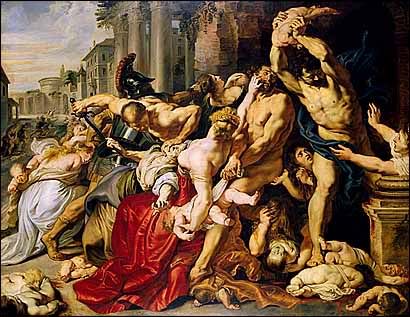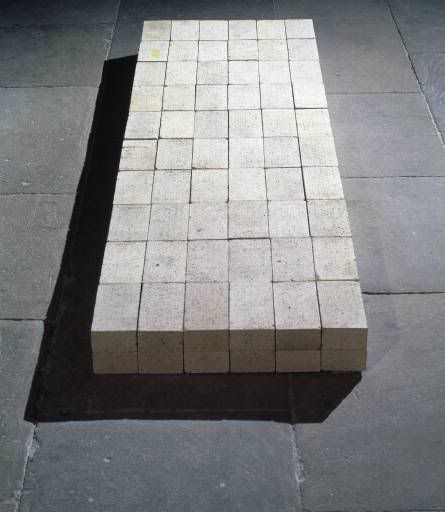
Felix Gonzales Torres Untitled (Rossmore II) 1991
(I’d originally intended to start my Hundred Days project by writing about another work of art entirely, but since it’s World Aids Day, this seemed far more appropriate)I’ve got a confession – I love Conceptual Art, and without getting into the tricky business of definitions (one draft of this blog has already been consigned to the recycle bin after becoming utterly bloated with art theory), I mean real Conceptual Art, not just ‘stuff that’s a bit weird and isn’t a proper painting’. I mean work that’s so minimal and physically inconsequential that you have to do a series of mental gymnastics to understand why it’s there. To me, true conceptual art works like a good crossword, it takes time, it stretches parts of your brain that other activities don’t as you wrestle to understand why, for example,
a glass of water is an oak tree. Of course, you don’t necessarily come out of the encounter with a definite answer – more often you come out with a lot of indefinite questions, and, perhaps, more often in a state of utter befuddlement. But that’s good, I like being befuddled.
In those terms Conceptual Art, for me at least, is quite a cerebral activity, quite cool and detached, it’s art for the head and for the intellect, a mental workout if you like.
So imagine my surprise when I burst into tears in front of a pile of sweets in The Serpentine Gallery on a warm July day in 2000.
Perhaps I should point out that me turning into a blubbering mess in front of works of art and architecture isn’t a particularly rare occurrence, my long suffering partner has frequently had to nonchalantly walk off and take photographs or read a wall text while I howl at, say, a Barnet Newman painting, the view from the forum in Pompeii or the Temple of Karnak. It’s not something I’m ashamed of, in a way I find it comforting that after all these years of studying art some things still have the capacity to bypass my analytical detachment, catch me off guard and deliver a great big emotional gut-punch.
But where was I? Oh yes, in front of a pile of sweets blubbing.
These ‘candy spills’ were a staple of the Cuban artist, Felix Gonzalez-Torres's practice, at the beginning of the exhibition a quantity of sweets would be arranged, the artist specifying the colour of the sweets, their arrangement (either as a ’pavement’ laid out on the gallery floor or as a pile in the corner) and the total weight of sweets to be displayed. Once installed, the gallery visitors were free to help themselves to the sweets so that over the course of the exhibition the pile or pavement would slowly disappear, eroded by the visitors.
At first the whole idea made me chuckle, it seemed fun and mischievous. We were being given carte blanche by the artist to break two of the cardinal rules of the gallery – 'no eating' and 'don’t touch the artworks'. Children visiting the exhibition gleefully filled their pockets and adults, a little more reticent at breaking the standard patterns of correct behaviour, turned into children, giggling as they wandered the exhibition happily munching on lime sherbets and chocolate caramels. It felt warm and generous, coupled with the ‘paper stacks’ (piles of prints by the artist that we were invited to help ourselves to), here was an exhibition which allowed us not only sugary treats but something to take home with us at the end, all we need was a balloon and a slice of cake and it would have been like a conceptual art birthday party.
The other works in the exhibition were equally playful, a silver platform stood empty in the middle of one room, at random times during the day a go-go dancer in silver hotpants would perform on it listening to a walkman, in another two more walkmans (walkmen?) hung on the wall in a room festooned with strings of light bulbs – the wall text informed us that couples were invited to plug themselves into the walkmans and waltz around the room under the lights (this being an exhibition in England, no-one did of course, but we all got the joke).
As I stood in front of
Untitled (Rossmore II), mouth fizzing with sherbet, I turned to the gallery guide to read up on the work and learnt a piece of information that started the torrent. The weight of the sweets in front of me at the start of the exhibition had been the weight of the artists’ lover, Ross on the day that he had been diagnosed with AIDS. Like Ross, the pile of sweets was destined to lose weight, to diminish and eventually disappear. Suddenly this playroom of dancing and sweet-scoffing became a place of loss, the go-go platform and unused walkmen hanging in the dancing room became
memento moris, as much symbols of absence as they had been sites of potential entertainment and play. I tried to compose myself, but the tears started streaming down my face.
As I stood there, desperately trying not to completely lose my composure and slip into all-out howling, a small boy approached the sweet pile. “You can eat the sweets you know.” said a gallery attendant.
”Really?” said the boy, his eyes widening.
“Yep, help yourself.”
He grabbed a handful and scuttled back to his parents “Mum, Dad. You can eat the sweets!” he yelled joyfully.
I looked up at the gallery attendant who was now grinning as broadly as the boy with his handful of lime sherbets and it hit me. The work
was about loss, about the cruelty and stupidity of AIDS, about the death of a partner and the gaping hole that it leaves in people’s lives, but it was also about those tiny moments of shared joy in any relationship, how loss and such moments act on each other to make us feel both more keenly. When Pete’s away from home, it’s not just his presence I miss, it’s the tiny moments – his daft jokes, his inability to remember to take a lighter with him when he goes for a bath, his ‘coffee symphony’ (a ritual involving making as much noise as is humanly possible with teaspoons, coffee jar and sugar bowl just so I know that he is making coffee, the implication being that it’ll be my turn next).
But more than that – the work was about carrying on, in another location the sweets would be replenished, in an hour or so, the go-go dancer would be back and in another place couples would waltz to a private soundtrack under the lights. Loss is always with us, it’s part of life, it’s part of being human, but so are the little moments, the ones that remind of those we love and those we've lost and we can keep replaying them over and over again.
We left the gallery and walked across Hyde Park to Kensington where we dropped my mum off at her hotel and then headed for the tube. On the platform, as part of a public art project the gallery were running associated with the exhibition was another of Gonzalez-Torrez’s works, a
billboard size print of a photograph of an empty bed – the bed that he and Ross shared.
As the tourists bustled around us I grabbed Pete’s hand and held on, lost in the moment.














